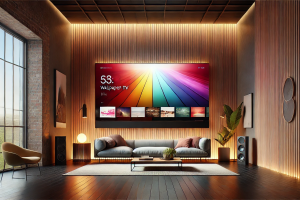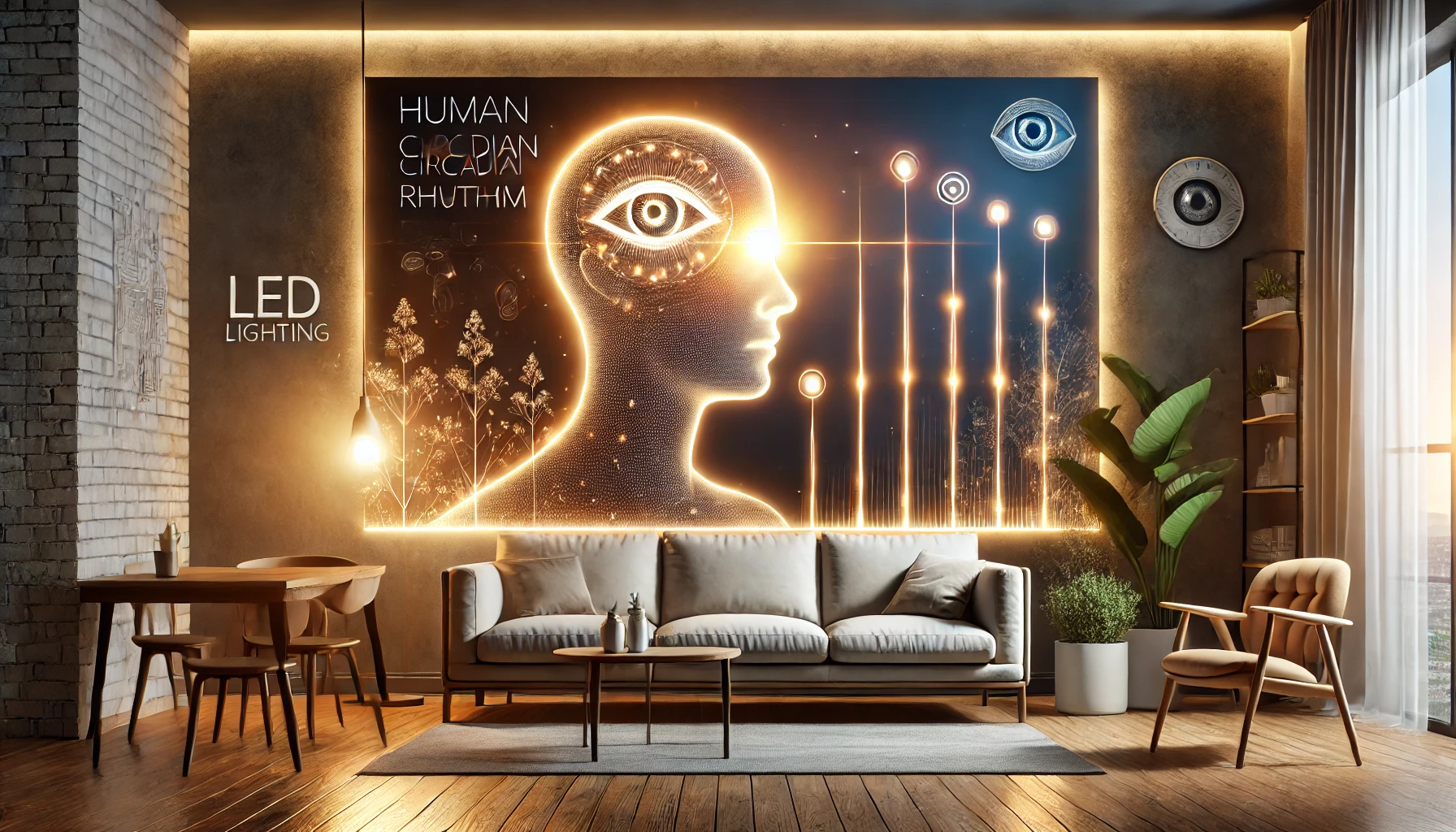Health Benefits and Risks of LED Lighting: What You Need to Know
- Posted by Emily Brown (United Kingdom)
- Categories Technology
- Date September 22, 2024
Health Benefits and Risks of LED Lighting: The conversation around energy-efficient lighting has shifted significantly in recent years. LEDs (light-emitting diodes) have emerged as the preferred choice over incandescent and fluorescent lighting due to their environmental and financial benefits. But did you know that LED lighting offers notable health advantages too? In this post, we’ll explore the health benefits of LED lighting, its impact on sleep and eye health, and the potential risks associated with LED lights.
Let’s break down what makes LED lighting a better choice for your well-being, and how to maximize its benefits for a healthier lifestyle.
Health Benefits of LED Lighting: What Makes Them Better?
LED lighting is much more than just energy-efficient. It also mimics natural daylight, providing numerous health benefits that can improve your quality of life.
1. LED Lighting for Eye Health
One of the key benefits of LED lighting is its ability to provide clear, flicker-free illumination. Traditional light sources, like fluorescent bulbs, tend to flicker, which can strain your eyes and cause headaches over time. LED lights, on the other hand, deliver stable, consistent light. This helps reduce eye strain, especially when working or reading for extended periods.
According to studies, long exposure to flickering lights may cause visual discomfort and can contribute to more serious eye issues. With LED lighting, these risks are minimized, making it a safer choice for your eye health.
2. Is LED Lighting Safe?
Yes, LED lighting is generally safe. Unlike some traditional lighting options that emit ultraviolet (UV) radiation, LEDs are UV-free. Exposure to UV light over time has been linked to skin damage and even a higher risk of skin cancer. By eliminating this harmful radiation, LED lighting provides a safer, healthier lighting option for everyday use.
Moreover, LED lights do not contain mercury, a toxic element found in some compact fluorescent lamps (CFLs). When CFLs break or are disposed of improperly, they can release mercury into the environment, posing health risks. With LED lighting, this is not a concern.
LED Lighting and Circadian Rhythm: Does It Affect Your Sleep?
When discussing the health effects of LED lighting, its impact on the circadian rhythm is a crucial consideration.
3. LED Lighting and Circadian Rhythm
Your circadian rhythm is your body’s internal clock that regulates sleep and wakefulness over a 24-hour period. Exposure to bright, blue-rich light during the day is beneficial because it helps enhance alertness, mood, and productivity. However, exposure to blue light during the evening can disrupt your sleep.
LEDs, particularly those that emit cooler, blue-hued light, can interfere with your circadian rhythm if used excessively during nighttime hours. This is because blue light suppresses the production of melatonin, the hormone responsible for inducing sleep. To avoid disrupting your sleep-wake cycle, it’s advisable to limit exposure to bright LED lighting after sunset.
4. Does LED Lighting Affect Sleep?
Yes, LED lighting can affect sleep, but it’s all about timing. During the day, LED lighting that emits blue wavelengths can help keep you alert and awake. However, in the evening, this same light can hinder melatonin production, making it harder for you to fall asleep.
To minimize these effects, try switching to warmer LED lights in the evening or use smart LED bulbs that can adjust their brightness and color temperature automatically. This can help create a more relaxing environment, promoting better sleep.
Specialized Benefits: LEDs for Mood and Seasonal Affective Disorder (SAD)
Beyond sleep and eye health, LED lighting can positively impact your mood, especially if you struggle with Seasonal Affective Disorder (SAD).
5. LED Lighting for Seasonal Affective Disorder (SAD)
Seasonal Affective Disorder (SAD) is a type of depression that typically occurs during the darker months of the year when exposure to natural sunlight is limited. One effective treatment for SAD is light therapy, which mimics natural sunlight. Bright, full-spectrum LED lighting is often used in light therapy because it can deliver a broad range of wavelengths that are beneficial for mood regulation.
By increasing serotonin levels, LED light therapy can help reduce symptoms of SAD, making it a valuable tool for individuals who struggle with this condition. Full-spectrum LEDs are particularly effective because they provide a well-rounded range of light wavelengths similar to natural sunlight.
6. LED Lighting for Better Mood
Besides treating SAD, LED lighting has also been found to boost mood in general. The quality of light we are exposed to can influence how we feel throughout the day. Bright, natural-like LED lights can enhance productivity and elevate mood, while dimmable options allow you to customize the ambiance, helping you relax when needed.
Energy Efficiency and Environmental Impact of LED Lighting
While the focus of this article is on health benefits, it’s important to note that the energy-efficient nature of LED lighting contributes indirectly to better well-being. Here’s how.
7. Energy-Efficient LED Lighting Benefits
LED lights consume far less electricity compared to traditional incandescent or fluorescent bulbs, and this reduced energy consumption has broader environmental benefits. The lower demand for electricity reduces the strain on power plants, ultimately leading to fewer greenhouse gas emissions.
By reducing energy use and minimizing your carbon footprint, energy-efficient LED lighting supports a healthier planet, which in turn supports human health. Moreover, their longer lifespan means fewer replacements and less waste, adding to their eco-friendly credentials.
How to Make the Most of LED Lighting’s Health Benefits
If you want to reap the full range of health benefits from LED lighting, here are some tips:
- Choose the Right Color Temperature: During the day, opt for cooler, blue-rich LED lights to enhance focus and alertness. In the evening, switch to warmer lights to promote relaxation and support your circadian rhythm.
- Use Dimmable LEDs: This allows you to adjust the brightness of your lighting according to your needs, helping you create the right ambiance for different activities—whether you’re working, relaxing, or preparing for bed.
- Incorporate Smart Lighting: Smart LED bulbs can automatically adjust their color temperature based on the time of day, making it easier to maintain a healthy sleep-wake cycle.
- Try LED Light Therapy: If you experience symptoms of SAD or low mood during the winter months, consider investing in a full-spectrum LED light therapy box. Regular use can significantly improve mood and overall well-being.
Maximize the Health Benefits of LED Lighting
In conclusion, LED lighting offers numerous health benefits while being energy-efficient and environmentally friendly. From protecting eye health and supporting mood, to helping regulate the circadian rhythm, LED lights are an excellent choice for both your home and workplace. However, like all technologies, they should be used wisely. Be mindful of how blue light exposure can affect your sleep, and consider adjusting your lighting based on the time of day for optimal health.
If you want to learn more about how lighting and other technologies impact human health, visit Regent Studies for additional insights and educational resources.
For further information on the relationship between LED lighting and health, you can also check out this external guide on lighting and health.
Next post
Stealth Appliances: How Hidden Kitchen and Home Gadgets Transform Modern Spaces
You may also like




